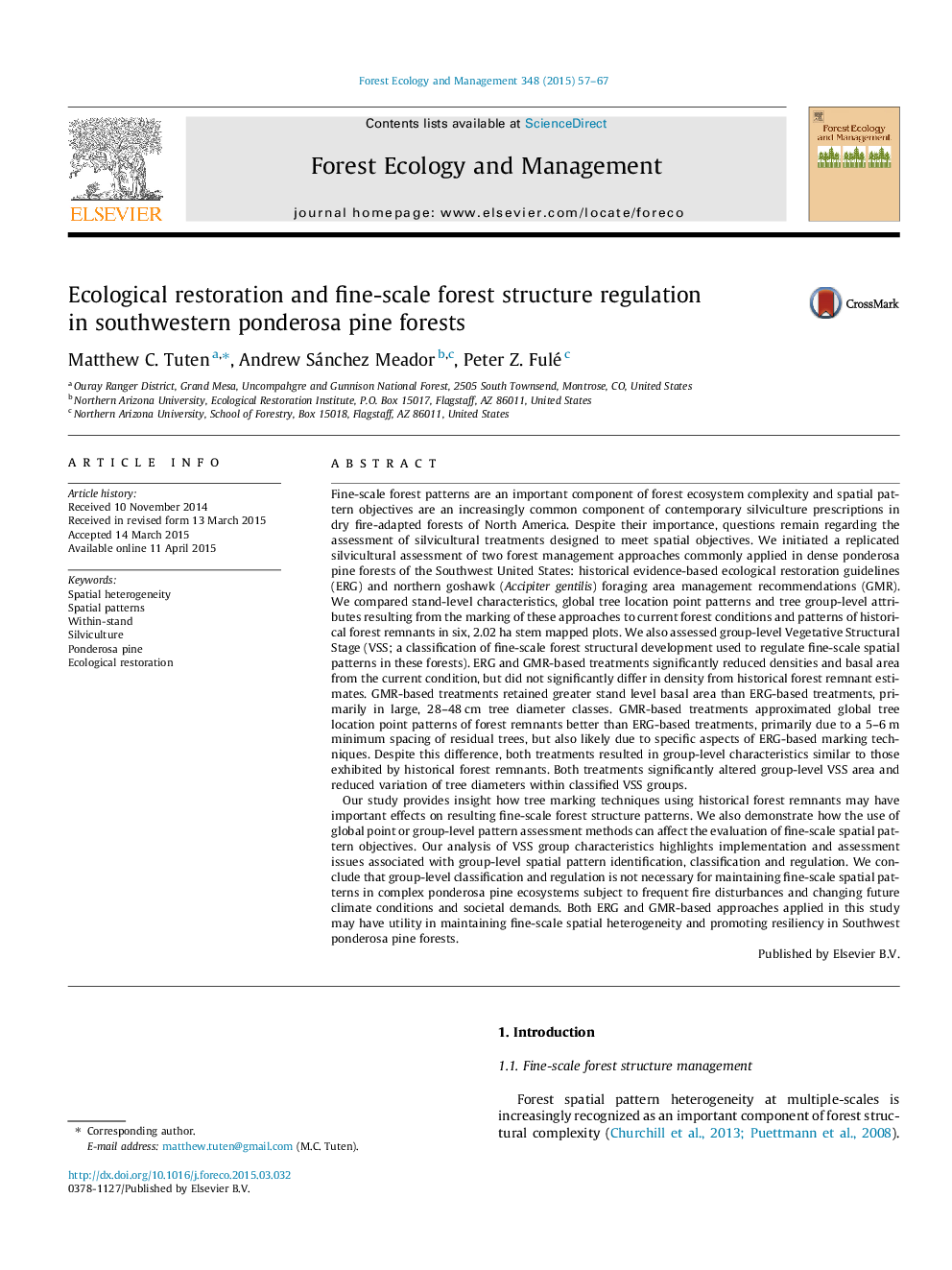| Article ID | Journal | Published Year | Pages | File Type |
|---|---|---|---|---|
| 6542757 | Forest Ecology and Management | 2015 | 11 Pages |
Abstract
Our study provides insight how tree marking techniques using historical forest remnants may have important effects on resulting fine-scale forest structure patterns. We also demonstrate how the use of global point or group-level pattern assessment methods can affect the evaluation of fine-scale spatial pattern objectives. Our analysis of VSS group characteristics highlights implementation and assessment issues associated with group-level spatial pattern identification, classification and regulation. We conclude that group-level classification and regulation is not necessary for maintaining fine-scale spatial patterns in complex ponderosa pine ecosystems subject to frequent fire disturbances and changing future climate conditions and societal demands. Both ERG and GMR-based approaches applied in this study may have utility in maintaining fine-scale spatial heterogeneity and promoting resiliency in Southwest ponderosa pine forests.
Related Topics
Life Sciences
Agricultural and Biological Sciences
Ecology, Evolution, Behavior and Systematics
Authors
Matthew C. Tuten, Andrew Sánchez Meador, Peter Z. Fulé,
